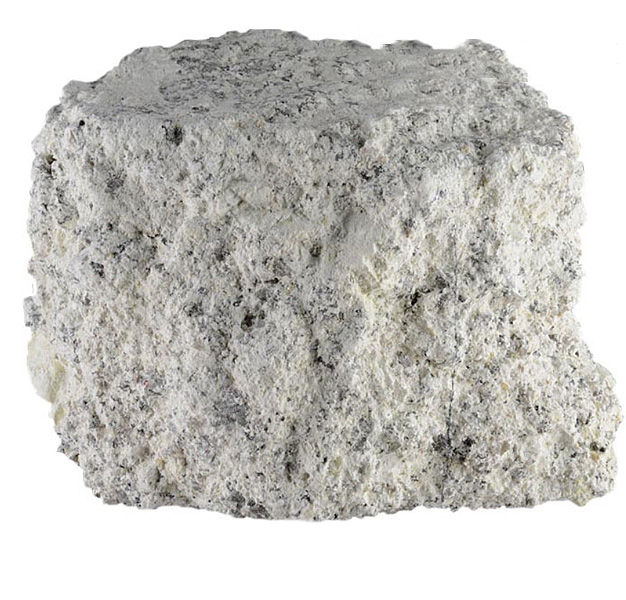
Fact sheet
This sample of siderophyllite (biotite) granite is from the eastern margin of the St Austell granite complex. In many respects it is a normal tourmaline-mica granite, however, it is quite unusual in also containing a mineral thought to be cordierite. This magnesium, aluminium silicate forms a solid solution series with an iron-rich member sekaninaite. Without an analysis the two species cannot be discriminated.
The presence of cordierite is evidence that the granitic magma incorporated (and digested) surrounding host-rocks (Devonian metasediments) before final consolidation. Cordierite is known from the margins of the Dartmoor granite, but this is possibly the first report of the mineral from the St Austell granite complex.
Cordierite usually resembles quartz, orthoclase or plagioclase. It can be distinguished from quartz by its cleavage and the presence of pinite (a characteristic form of alteration involving muscovite). It can be distinguished from orthoclase since its cleavage is less well developed.
How many cordierite crystals can you find?
A case study of the St Austell granite complex in Cornwall, England, illustrating the range of rocks associated with a granite intrusion. The earliest part of the complex is a siderophyllite (biotite) granite containing muscovite and tourmaline typical of a SW England granite, with many primary magmatic features.
This early intrusion was followed by the intrusion of an evolved volatile-rich magma which was the driving force behind a series of intense hydrothermal processes as volatiles escaped from this magma and helped to establish an extensive alteration halo (aureole). Boron, fluorine and lithium (as well as water) played major roles in the formation of the second intrusion and in the associated hydrothermal processes. Igneous activity lasted around 18 million years from 282 Ma (siderophyllite granite) to 265 Ma (fluorite granite).












